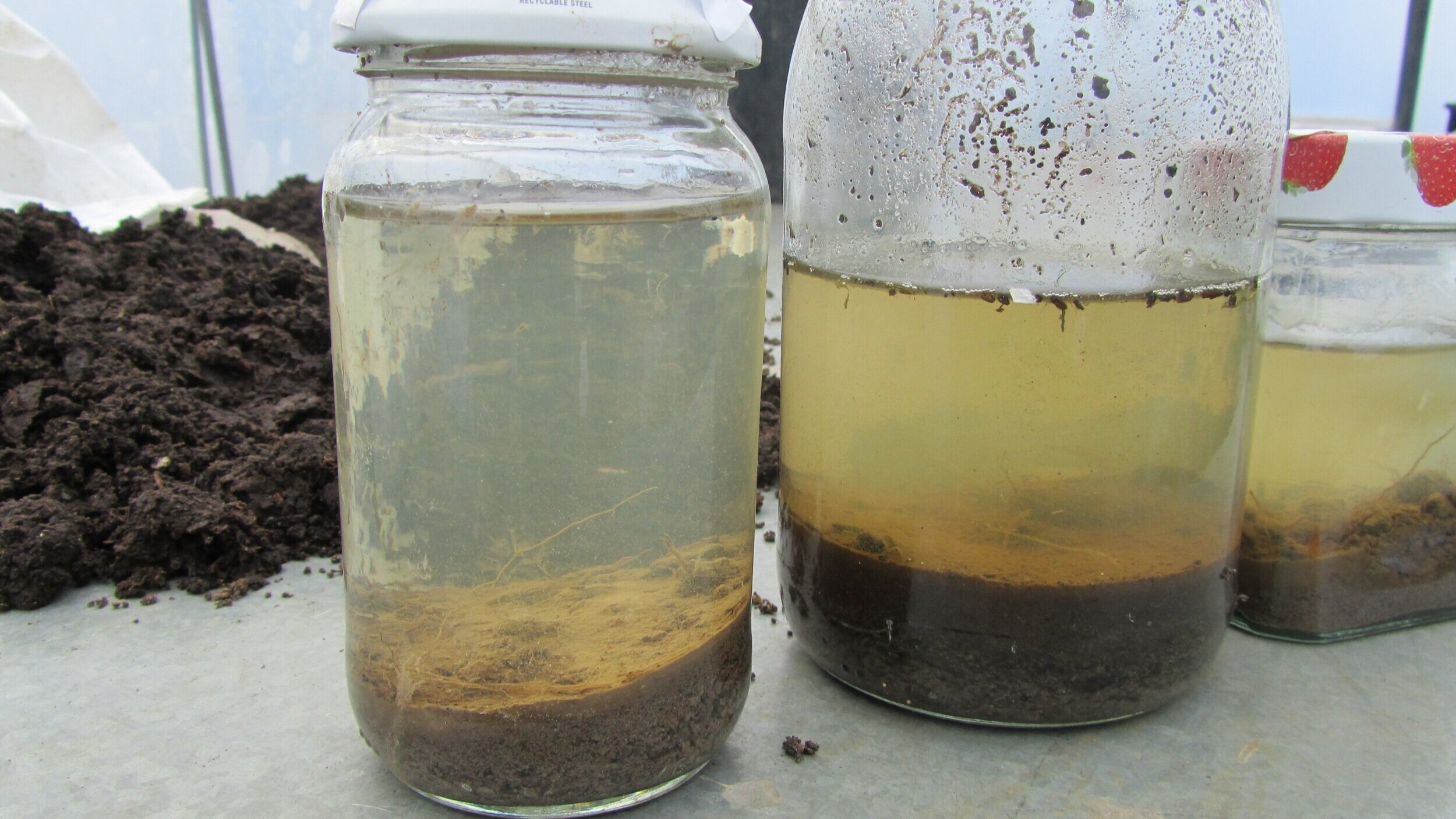On the importance of the soil in your garden
Soil fertility is the key to growing vegetables successfully. “Feed the soil that feeds the plant” is one of the most important organic principles. Soil provides the nutrients for the plants.
Find out about your soil with 2 simple tests:
The finger test: Rub a hand full of moist soil between your thumb and your fingers. If the soil sample is sticky and can be rolled into a ball it’s clay soil. If the sample is soapy and leaves fingers dirty it’s silty soil and if the sample feels gritty and will not stick together it is sandy soil. Soil samples that look very dark with a spongy feel that cannot be rolled into a ball are peaty soil.
The jam jar test: Half fill a jam jar with soil, add water until it is three quarters full and some vinegar, put the lid on, shake it for one minute and put it down immediately. The various fractions of sand, silt and clay will separate and an approximate proportion of each will show. Sand and stones at the bottom, then silt, then clay with organic matter floating or on top of the clay.
Please do remember that the soil can vary considerably even in a small area.
Clay soil is heavy, cold, sticky when wet, hard when dry, susceptible to compacting, poorly drained, rich in nutrients and can be greatly improved through the addition of organic matter.
Silt soils are between clay and sand, but behave more like clay soil, they have good water retention and less drainage problems, are fertile and respond well to addition of organic matter.
Sandy soil is light, warm, heats up quickly in the spring, dries out quickly and is unable to retain water, nutrients wash out easily, addition of organic matter will greatly improve this soil.
Peat soils are rich in organic matter, but may be infertile and acidic.
Loam soils are an ideal mixture of more than one type, the sandy elements give good drainage and aeration and the clay and silt elements provide nutrients and water retention.
Plants get their nutrients from the soil. The major nutrients plants require are Nitrogen, Phosphorus, Potash (K), Calcium, Magnesium and Sulphur and also trace elements like Iron, Zinc and Silica.
Build a healthy soil
You can increase the amount of organic matter in your soil by adding compost, aged animal manures, green manures (cover crops), mulches or peat moss. Because most soil life and plant roots are located in the top 6 inches of soil, concentrate on this upper layer. With an adequate supply of compost and farmyard manure and leguminous crops you will ensure a balanced supply of nutrients to your crop. You will also improve the soil structure and the quality of your soil.
Soils as Carbon Sink - 50% of organic matter is carbon.
“Soils are by far the largest carbon sink (twice more than all the vegetation and the atmosphere combined).” writes my former colleague at The Organic Centre, Klaus Laitenberger in his recent newsletter. He argues very passionately to put carbon back into the soil by farming and growing organically and put soil fertility first: “I mentioned that our soils have become degraded to the extent that we have already lost 30% of the agricultural land area. The reason for this is mainly due to industrial farming methods. What we have done is using up the organic matter in the soil and never replenishing it. The organic matter content is usually between 5 and 7% of the soil and consists of everything that is and once alive. You could see it like the soil’s bank account – the soil’s reserves. But now in most arable soils throughout the world this organic matter content has dwindled down to about 1 or 2% and farmers themselves know that there are no more birds following the plough because there are no longer worms in their soils. “ November newsletter Green Vegetable Seeds)


